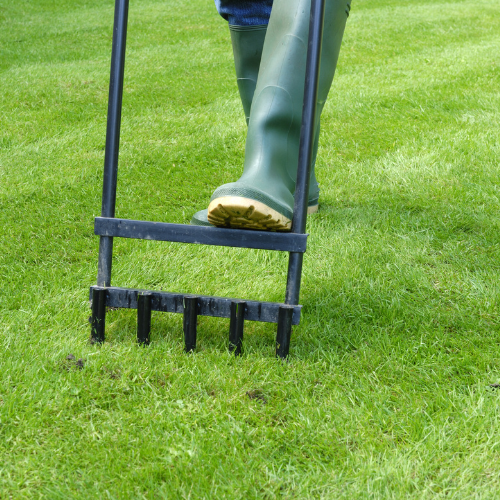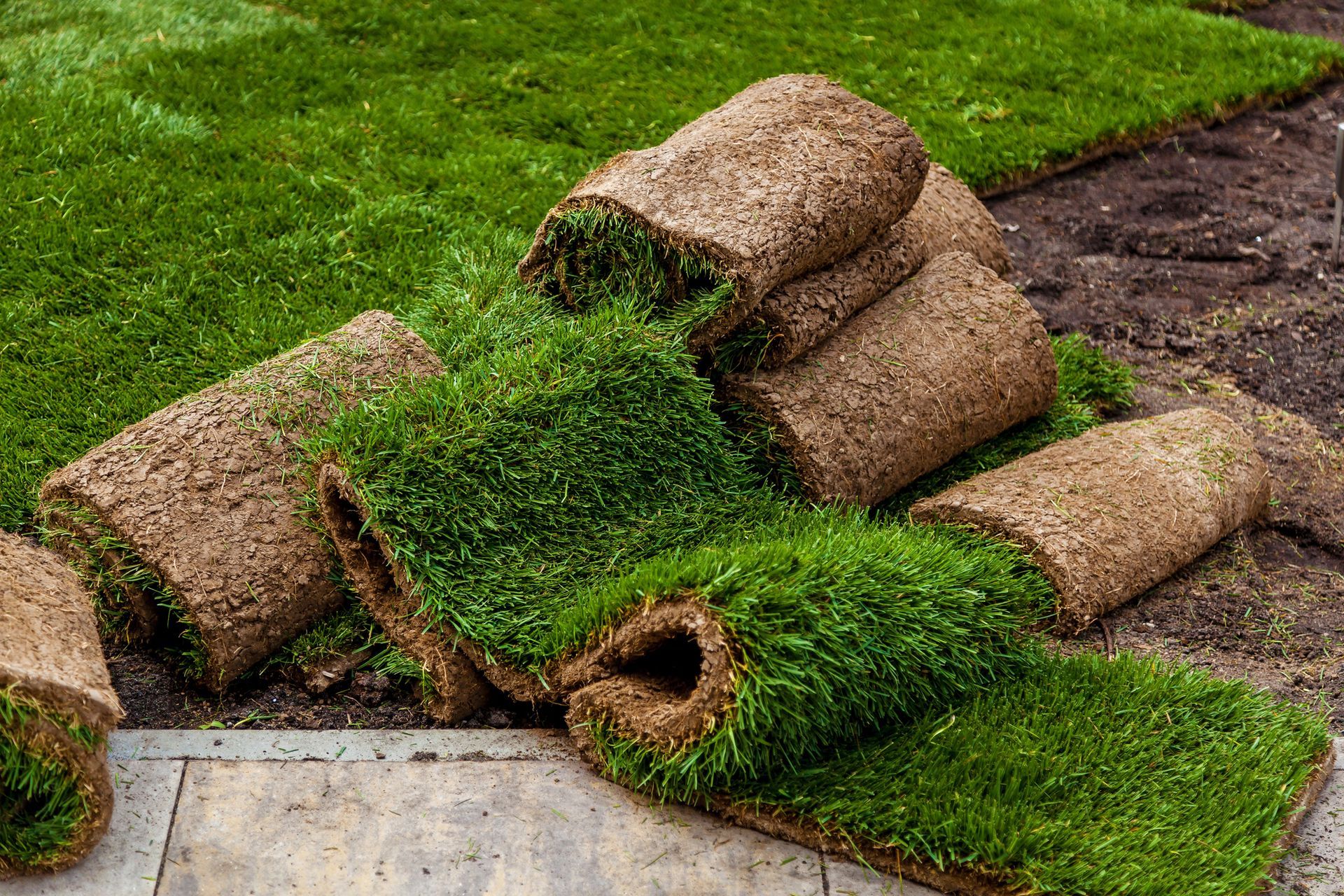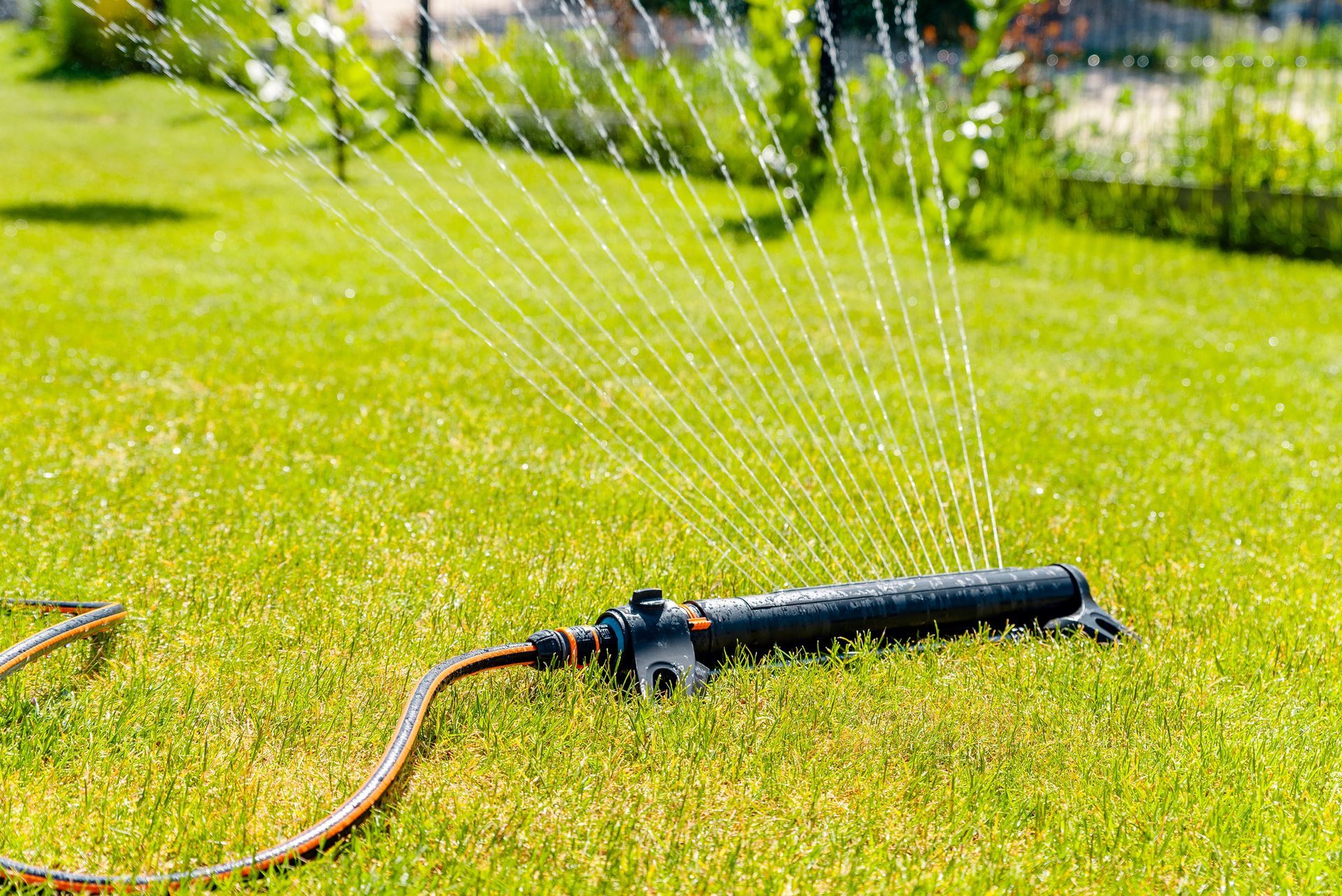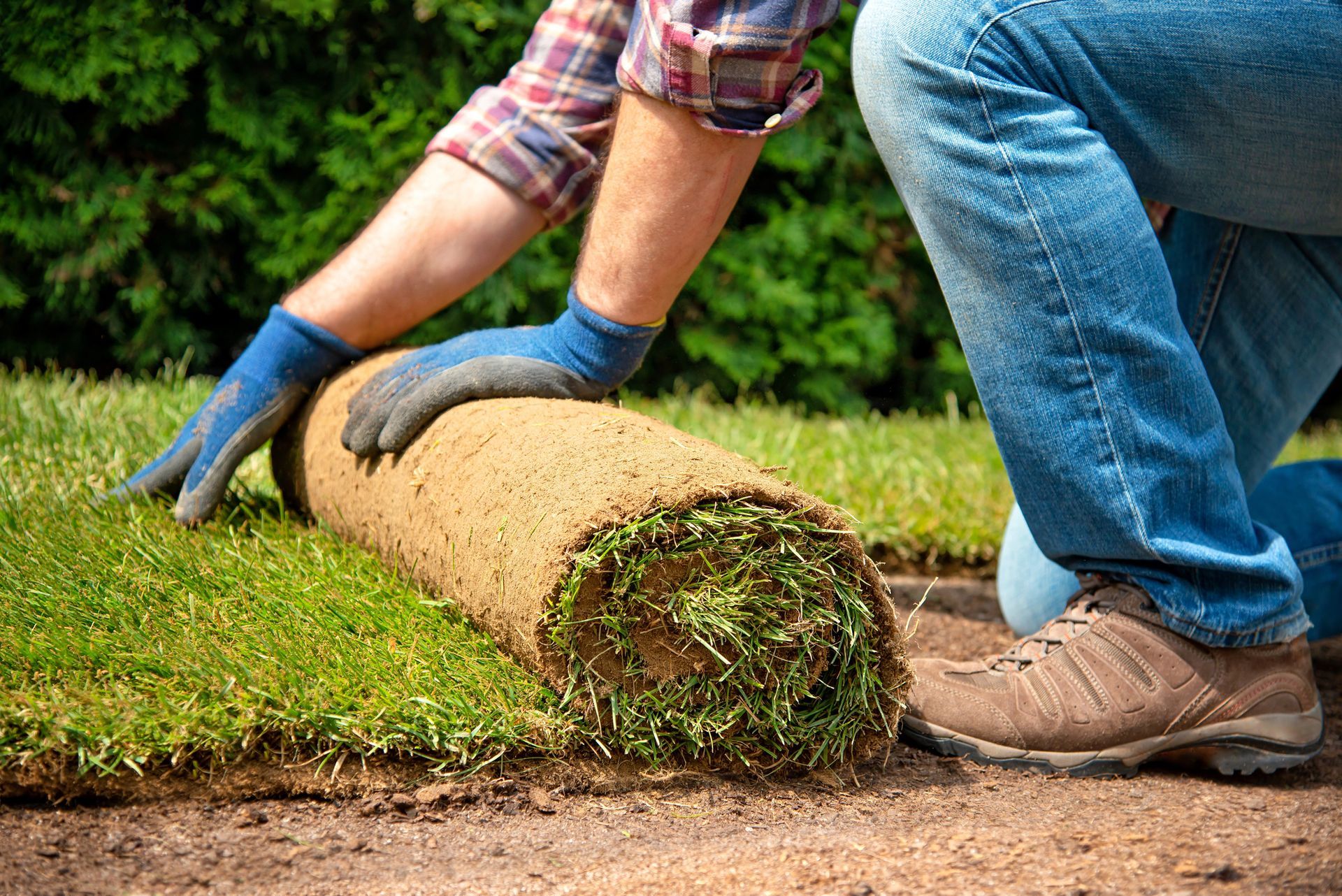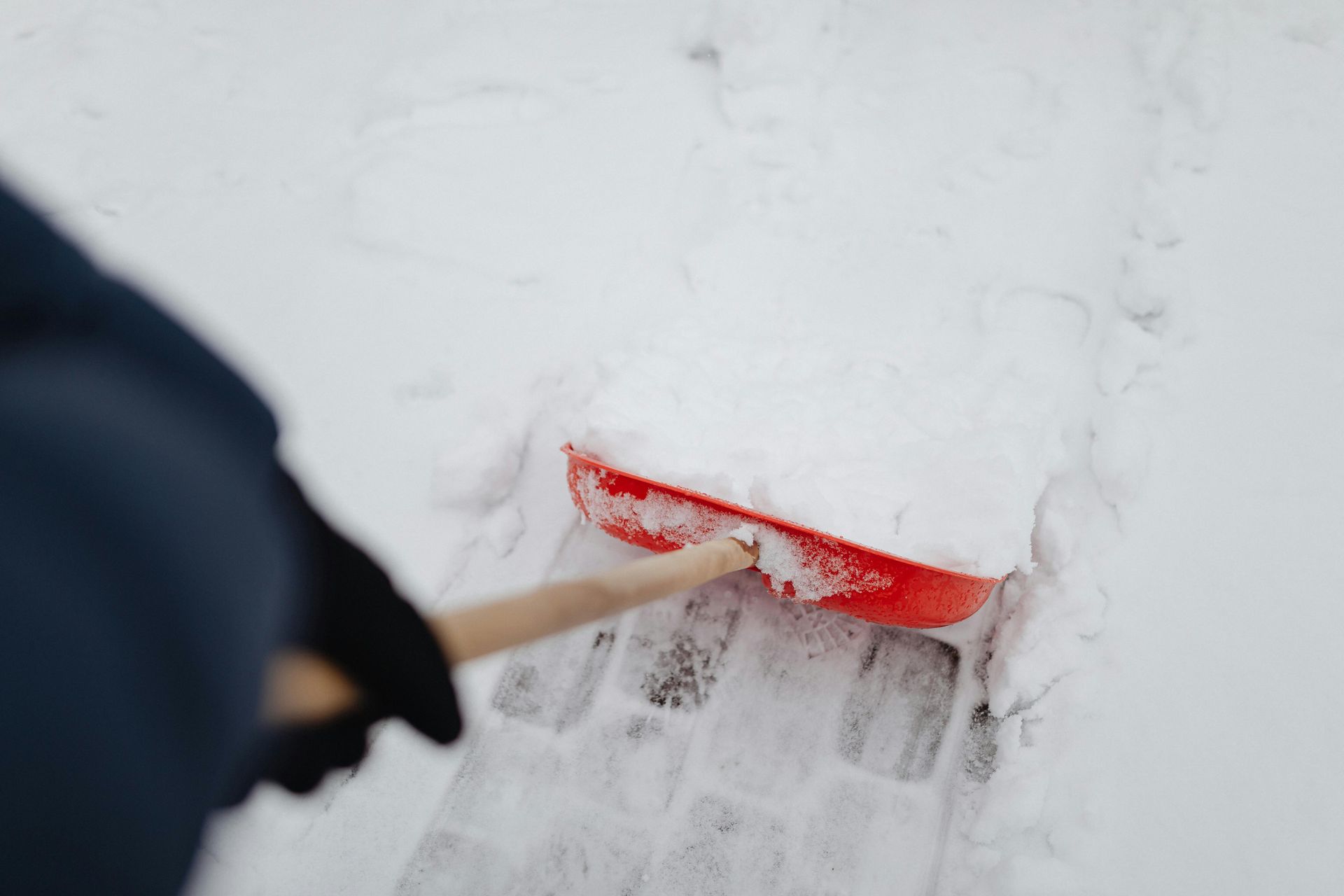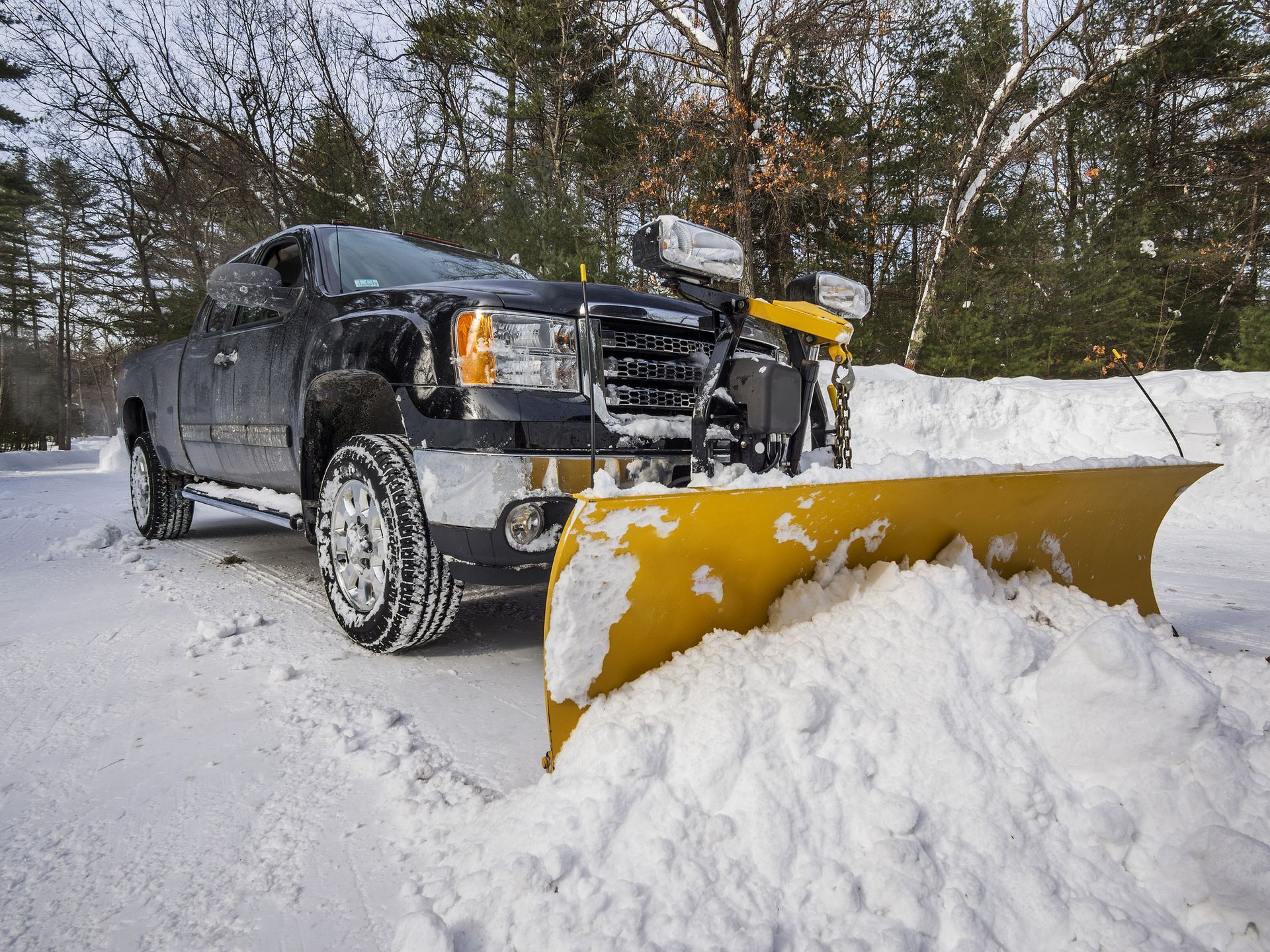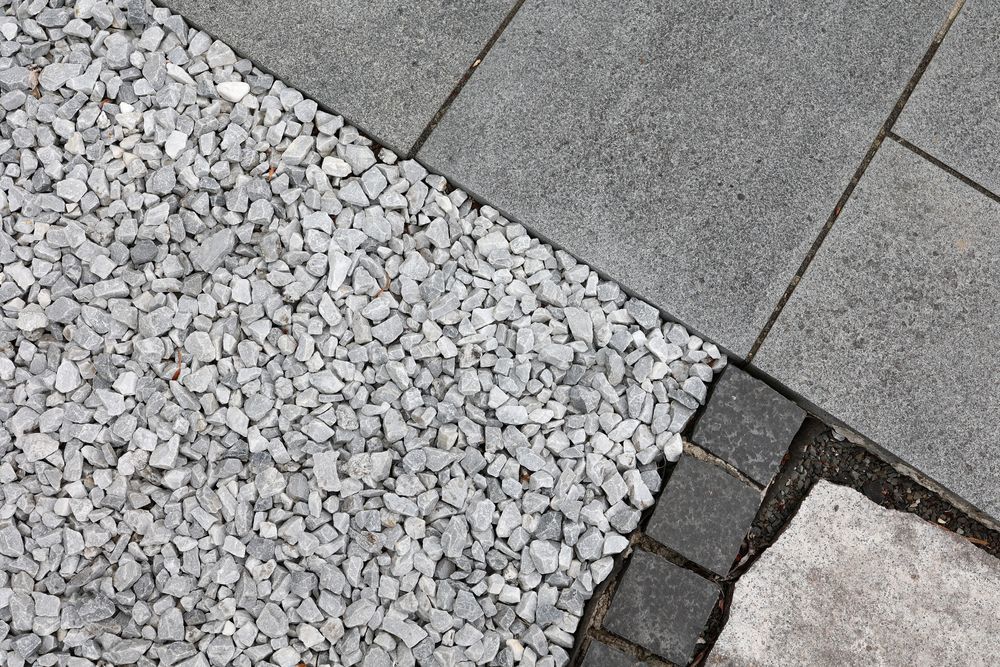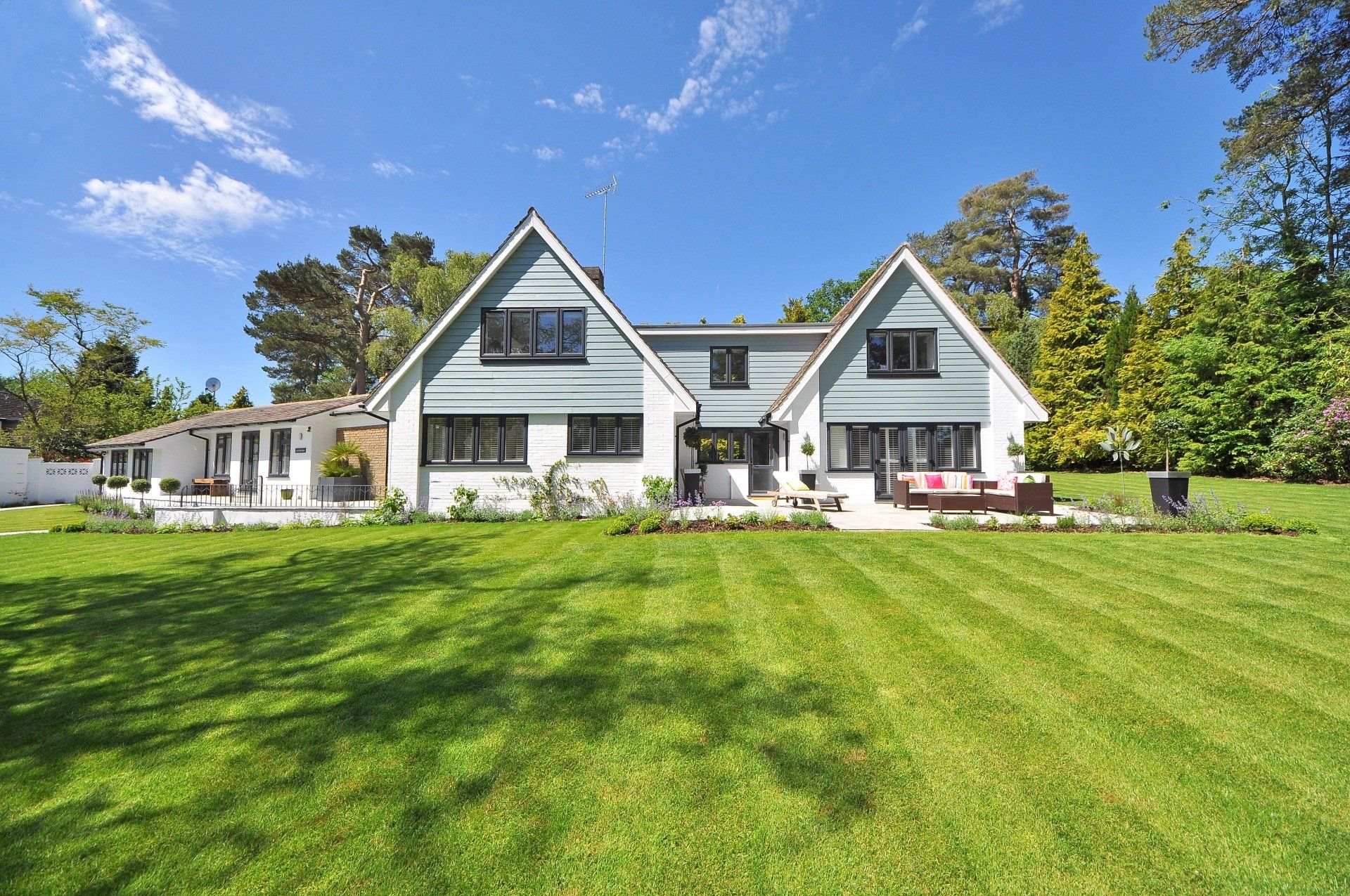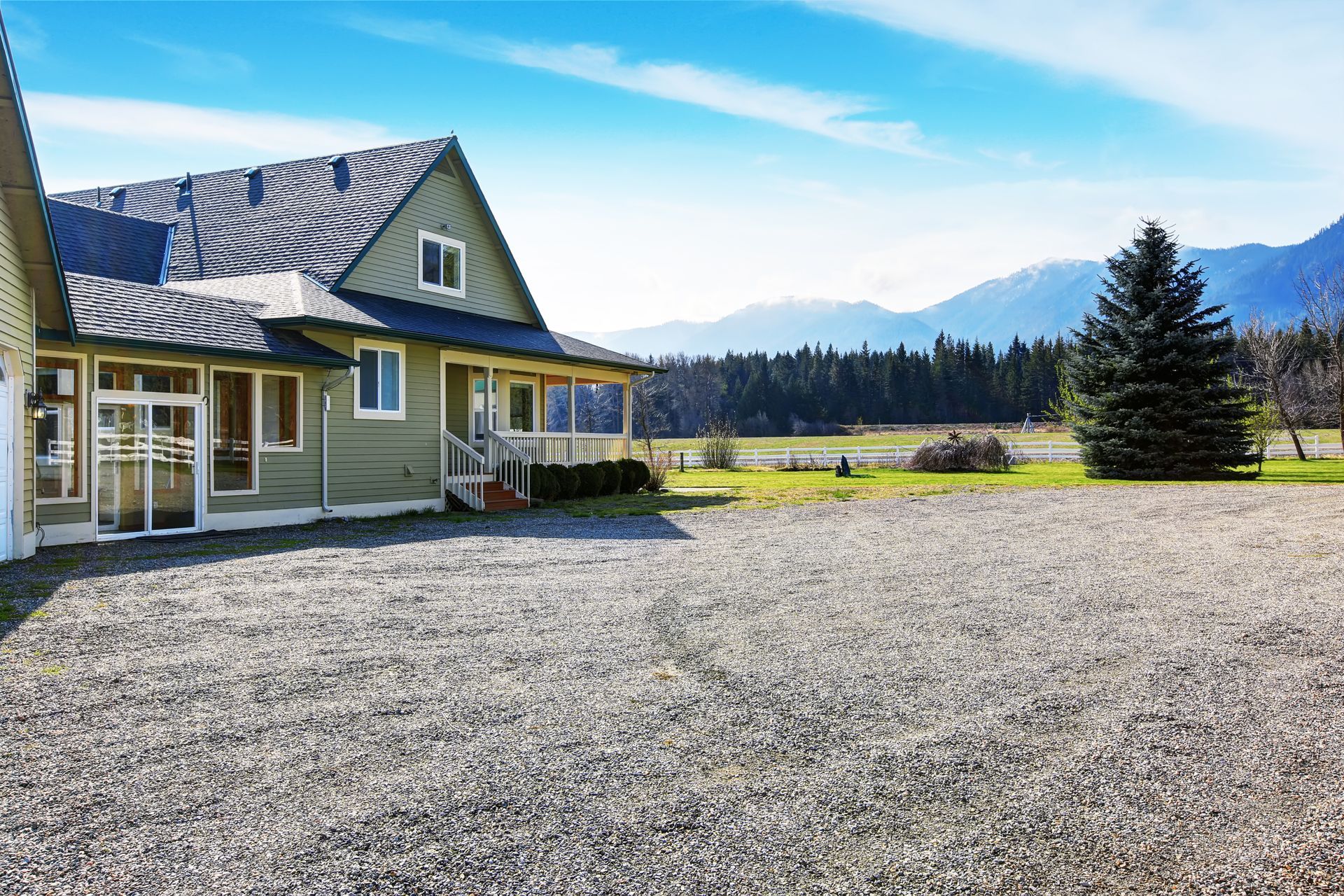Sod vs. Seeding: What’s Best for Your Calgary Lawn?
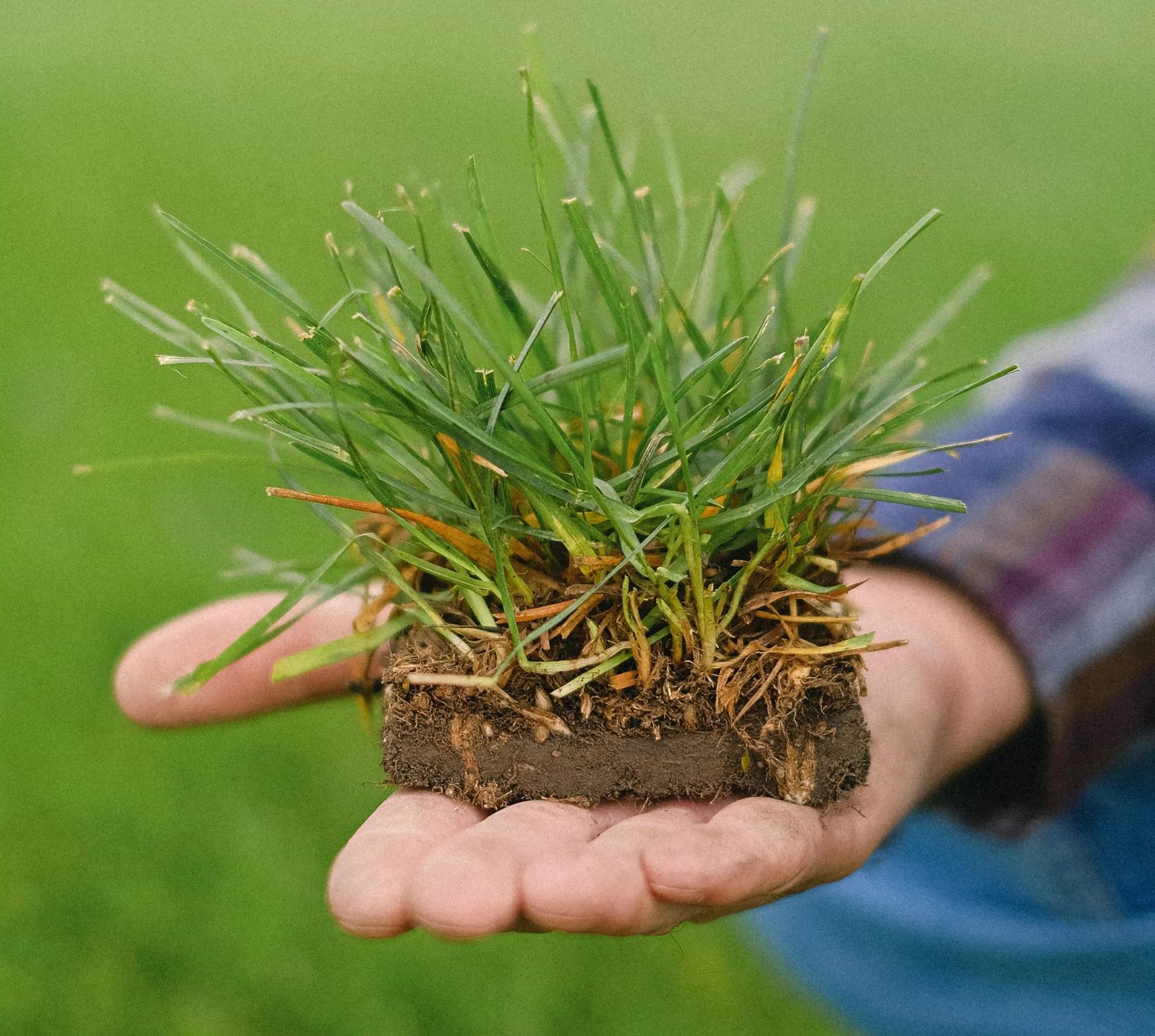
Creating a new lawn comes down to two main options: laying sod or planting seed. Each has its pros, costs, and ideal use cases, especially in Calgary, where the climate can be tricky.
Knowing the pros, cons, and costs of both options helps you avoid costly do-overs and gives you a better shot at a healthy, long-lasting lawn.
Use these practical tips to time the climate, prep your soil, and master watering schedules to grow that perfect lawn this summer.
Balancing Immediate Results vs. Patience
The biggest difference between sod and seed comes down to time.
Sod gives you a lawn that looks finished the same day it’s installed. It’s pre-grown, mature grass that’s rolled out like a carpet.
The Advantages of Sod
- Instant green coverage: Sod transforms bare soil into a green lawn in a single day. There's no waiting for seeds to sprout or gaps to fill—just roll it out, water it, and enjoy the visual upgrade.
- Erosion control on slopes: If your yard has slopes or areas prone to runoff, sod provides immediate ground cover that helps prevent soil erosion. Seed can easily wash away in heavy rain before it has a chance to take root.
- Usable lawn in 2–3 weeks: With proper watering and care, sod establishes quickly. Most lawns are ready for light use within two weeks and can handle full foot traffic by week three. That’s ideal for families, pets, and anyone who wants fast access to their yard.
For homeowners who want fast results, especially before selling a home, hosting events, or just enjoying summer, sod is the clear winner.
Seeding, on the other hand, requires patience. It can take 2 to 3 weeks just to germinate, and several months (even years) to fill in and mature. You'll need to keep people and pets off the area, water it often, and monitor for weeds. But seed can be a cost-effective and rewarding project for those willing to wait for great results.
The Advantages of Seeding
- Greater grass variety options: Seeding gives you more control over what type of grass you grow. You can choose varieties that suit your soil, sun exposure, and how you plan to use the lawn. Some grass blends are more drought-tolerant, while others are better for shaded areas.
- Lower upfront cost: Grass seed is much cheaper than sod per square foot. If you’re covering a large area or working within a tight budget, seed can save you hundreds, especially if you’re doing the labour yourself.
- Flexibility for DIY enthusiasts: Seeding is a manageable DIY project for most homeowners. You can work in stages, tackle smaller patches, and reseed as needed. It also gives you more chances to experiment and learn what works best for your yard.
The key is knowing how quickly you need your lawn to be usable, and how much effort you’re ready to put in along the way.
Sod vs. Seed: Key Considerations + Cost Comparison
Choosing between sod and seed isn’t just about what looks better or costs less. Timing, yard conditions, and future maintenance all determine which method makes the most sense for your property.
Here are a few key points to think about before making a decision:
- Timeline expectations: If you need a lawn fast, sod delivers immediate results and can handle light use within a few weeks. Seed takes longer, not just to sprout, but to grow strong enough to handle everyday wear. Consider whether you can wait several months before the lawn is ready for full use.
- Erosion and wear concerns for seed: Freshly seeded lawns are delicate. Heavy rain, strong winds, and even a single set of muddy footprints can undo weeks of progress. If your yard has slopes or heavy foot traffic, sod may be the safer choice to prevent frustration and patchy growth.
- Cost considerations: Price is often the deciding factor, but upfront costs don’t tell the full story. Sod and seed come with different material, labour, and maintenance needs.
Comparing Your Typical Costs
Budget plays a big role when deciding between sod and seed. But it’s not just the cost of materials, you also need to think about installation, soil prep, watering, and long-term care.
| Sod | Seed | |
|---|---|---|
| Upfront Cost (Materials Only - ie. Sod, Seed, Soil, etc.) | $0.90–$1.10 per sq ft | $0.05–$0.15 per sq ft |
| Installed Cost (Materials + Labour) | $1.75–$2.50 per sq ft | $0.25-$0.50 per sq ft (DIY) |
| Soil Prep and Fertilizer | Required | Required |
| Initial Irrigation Setup | Required | Required |
| Risk of Bare Patches and Reseeding | Low | High |
| Time to Full Use | 2-3 weeks | 2-3 months |
| First-Year Maintenance | Moderate: water, mow, fertilize | Higher: water daily, reseed, manage erosion |
| 3-Year Maintenance Investment | Lower: steady care, strong roots | Higher: overseeding, weed control, patching |
Quick takeaway:
- Sod costs more upfront but gives faster, more reliable results.
- Seed is cheaper at the start, but over the first few years, ongoing repairs and maintenance can close the price gap.
Climate, Watering, and Soil: What Calgary Lawns Need
Calgary’s unique weather, heavy clay soils, and seasonal extremes mean no two lawns are the same. Whether you're laying sod or spreading seed, success depends on when you start, how you water, and how well your soil supports growth.
Ideal Timing for Installation
The best time to establish a lawn in Calgary is in mid-spring and early fall. However, timing this can be challenging as the soil may still be too cold in the early spring or early frost in the fall can kill your seeds.
Try to avoid peak summer heatwaves too as high temperatures and dry conditions can stress young grass.
Watering Needs
Sod needs water right away. During the first two weeks, aim to water at least once per day, sometimes twice depending on the heat, to keep roots moist. After it starts rooting, you can taper off to once daily, then a few times a week, depending on the weather.
Seed is even more sensitive. You’ll need to water lightly 2–3 times a day during germination, which can take up to three weeks. Missed watering can delay growth or kill new sprouts. Ongoing moisture is critical until the grass thickens and fills in.
Understanding Calgary’s Soil and Weather Challenges
Most Calgary yards have clay-heavy soils with poor drainage and slightly alkaline pH. Both sod and seed need extra prep to thrive here.
Key tips:
- Add loam and organic matter to improve drainage and root development.
- Test your soil’s pH—aim for slightly acidic to neutral (6.0–7.0).
- Calgary’s low rainfall means irrigation isn’t optional. Plan for a sprinkler system or consistent hose watering.
Soil Preparation & Installation Steps
No matter which method you choose, a healthy lawn starts with proper prep. Skip this, and even the best sod or seed won’t take.
- Clear and test the site: Remove weeds and old grass, test soil pH, and mix in compost or loam to improve structure.
- Grade and level the base: Ensure proper slope for drainage, spread 4–6 inches of quality loam, and compact the surface gently.
- Install sod or seed: Lay sod in staggered rows with tight seams, or spread seed evenly and rake lightly into the soil.
- Set up irrigation:
Use sprinklers or hoses to cover the whole area and water immediately to kickstart root growth.
Maintenance & Long-Term Care Tips
The first few weeks are critical. Keep sod and seed moist with daily watering, and limit all foot traffic until roots are strong (about 2 to 4 weeks).
Once established, mow regularly but never cut more than one-third of the grass height at a time. Fertilize young lawns about 6–8 weeks after planting to support healthy growth.
Plan for annual aeration to prevent soil compaction, and overseed any thin areas each fall to keep your lawn thick and resilient. Spot-treat weeds and pests early to avoid bigger problems later.
Leave Your Lawn to Your Local Calgary Lawn Experts
Both sod and seed can give you a beautiful lawn—but the right choice depends on your timeline, budget, and how much work you want to take on. Sod offers fast, reliable results. Seed gives you flexibility and savings if you have time and patience.
No matter which path you choose, Scott’s Sod can help. We handle everything from soil prep to expert installation, so you get a healthy, lasting lawn without the stress.
Ready to enjoy a beautiful yard the easy way? Get in touch today to get a quote for your dream lawn.
